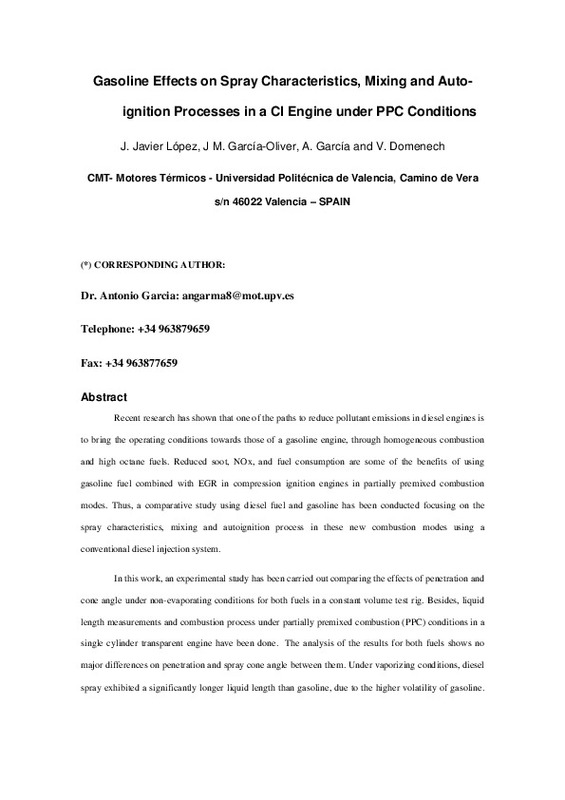JavaScript is disabled for your browser. Some features of this site may not work without it.
Buscar en RiuNet
Listar
Mi cuenta
Estadísticas
Ayuda RiuNet
Admin. UPV
Gasoline effects on spray characteristics, mixing and auto-ignition processes in a CI engine under Partially Premixed Combustion conditions
Mostrar el registro completo del ítem
López Sánchez, JJ.; García Oliver, JM.; García Martínez, A.; Domenech Llopis, V. (2014). Gasoline effects on spray characteristics, mixing and auto-ignition processes in a CI engine under Partially Premixed Combustion conditions. Applied Thermal Engineering. 70:996-1006. doi:10.1016/j.applthermaleng.2014.06.027
Por favor, use este identificador para citar o enlazar este ítem: http://hdl.handle.net/10251/57871
Ficheros en el ítem
Metadatos del ítem
| Título: | Gasoline effects on spray characteristics, mixing and auto-ignition processes in a CI engine under Partially Premixed Combustion conditions | |
| Autor: | Domenech Llopis, Vicente | |
| Entidad UPV: |
|
|
| Fecha difusión: |
|
|
| Resumen: |
Recent research has shown that one of the paths to reduce pollutant emissions in diesel engines is to bring the
operating conditions towards those of a gasoline engine, through homogeneous combustion and high octane
fuels. ...[+]
|
|
| Palabras clave: |
|
|
| Derechos de uso: | Reserva de todos los derechos | |
| Fuente: |
|
|
| DOI: |
|
|
| Editorial: |
|
|
| Versión del editor: | http://dx.doi.org/10.1016/j.applthermaleng.2014.06.027 | |
| Tipo: |
|






![[Cerrado]](/themes/UPV/images/candado.png)



